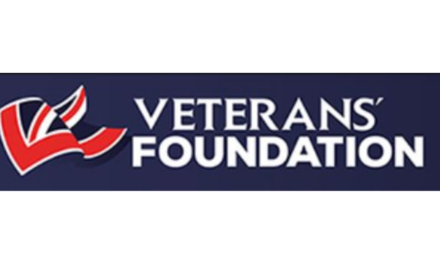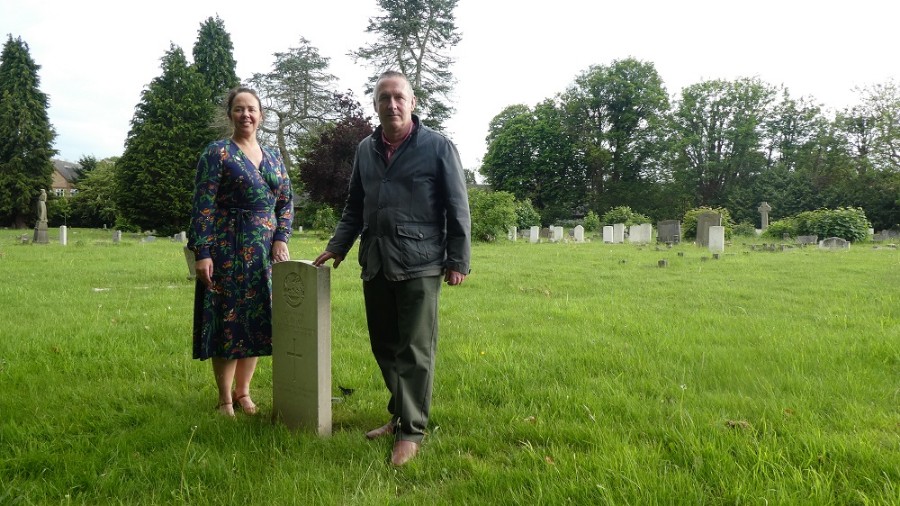Welcome to our blog series looking at opportunities in the Infrastructure & Engineering sector for those leaving the Armed Forces. Whether you served in the Army, Navy, or Air Force, you are likely to have developed skills and experience that can transfer well into civilian roles within this broad field.
Infrastructure & Engineering underpins many aspects of daily life in the UK, from transport networks and power supplies to public buildings and communications systems. This sector offers a range of career options for service leavers who are used to working in dynamic environments, managing resources effectively, and applying technical knowledge to practical problems.
Military training often includes leadership, teamwork, and discipline—qualities that are highly valued in Infrastructure & Engineering. Roles can include site management and coordination, where strong organisational and decision-making skills are vital, or project and programme management, where systematic planning and attention to detail are essential. Former service personnel may also find a natural fit in operations, logistics, or specialist engineering roles that draw on their technical training and problem-solving abilities.
In this opening article, we will outline the potential pathways to enter the sector, highlight the qualifications and accreditations that can strengthen your application, and suggest ways to make the most of networking events and resettlement schemes. Future articles will provide deeper insight into specific jobs and practical guidance from individuals who have successfully transitioned into these roles.
By the end of this series, we hope you will have a clear view of how your military experience can be translated into a rewarding career in Infrastructure & Engineering, as well as the steps needed to make this transition a reality. Stay tuned for our next instalments, where we will delve into detailed role profiles and offer advice from industry experts.
The Importance and Scope of Infrastructure & Engineering
The Infrastructure & Engineering sector is a key driver of economic activity in the UK. It encompasses the development and maintenance of essential systems such as transport networks, water supply, energy generation, and telecommunications. These areas require continuous investment and innovation to meet the needs of a growing population and support modern lifestyles. As a result, the sector is diverse, offering a broad range of professional opportunities.
Within Infrastructure & Engineering, you will find roles spanning construction, civil engineering, mechanical and electrical engineering, project management, maintenance, and more. Companies in this field can vary from large multinationals responsible for major infrastructure projects, to specialist consultancies offering focused design and technical services. This variety means that individuals with different backgrounds can often find a place to contribute, whether they prefer practical, hands-on work or strategic leadership positions.
For those leaving the Armed Forces, it is worth noting that many of the sector’s core demands mirror the discipline, resilience, and teamwork required in military settings. Infrastructure projects frequently involve managing resources efficiently, working to strict timelines, and solving unexpected challenges on site. Military experience in logistics, planning, and leadership can therefore translate well into roles where you must remain calm under pressure and effectively coordinate teams.
Over the coming articles, we will explore how specific military skill sets align with various roles in Infrastructure & Engineering. We will also outline the additional training or qualifications that can support a successful transition, as well as the importance of networking with industry professionals. By understanding the wide scope of this sector, you can begin to identify where your strengths and ambitions might best fit.
Synergies with Military Experience
One of the main reasons Infrastructure & Engineering is an appealing choice for service leavers is the close alignment between military training and the sector’s requirements. Those who have served in the Army, Navy, or Air Force often bring unique strengths that can set them apart in civilian roles:
- Leadership and Teamwork
- Military personnel are skilled in leading teams under pressure, a quality essential in dynamic engineering projects.
- The ability to foster cooperation and cohesion can help maintain productivity and morale on large-scale, multi-disciplinary sites.
- Discipline and Reliability
- Infrastructure and engineering projects typically involve strict timelines, standards, and budgets.
- The disciplined mindset common among ex-forces staff ensures tasks are completed on schedule and to a high standard.
- Problem-Solving and Adaptability
- Military service fosters a can-do approach to challenges, with personnel trained to remain calm and effective in rapidly changing conditions.
- This adaptability is highly valued in roles that demand quick thinking and solutions-focused approaches.
- Technical Skills and Specialist Training
- Individuals with experience in areas such as vehicle maintenance, communications systems, or electrical engineering can transfer these skills directly to civilian roles.
- Those with command and control backgrounds may find it easier to transition into operations, logistics, and project management positions.
- Project Planning and Risk Management
- Serving in the Armed Forces typically involves careful planning, resource allocation, and risk assessment—core elements in the successful delivery of infrastructure projects.
- The ability to assess and mitigate potential risks is particularly useful when managing safety standards and regulatory requirements.
These synergies show that many roles in Infrastructure & Engineering are a natural next step for those transitioning out of the military. By recognising how your existing expertise aligns with the demands of this sector, you can set clear goals and identify the roles that will enable you to make the most of your military background. In the next section, we will explore some of the specific job types and pathways to help you find the right fit for your transition.
Potential Roles for Service Leavers
The Infrastructure & Engineering sector offers a wide range of positions that can suit different backgrounds and skill sets. For those leaving the Armed Forces, understanding which roles align with your unique blend of military training and personal interests is the first step towards a successful transition. Below are some areas where ex-service personnel often find a strong fit:
- Site Management and Coordination
- Ideal for individuals with leadership experience who are comfortable overseeing teams and resources.
- Responsibilities often include scheduling tasks, ensuring health and safety standards, and managing on-site problems as they arise.
- Project and Programme Management
- Suited to those who excel at planning, budgeting, and working to tight deadlines.
- Involves coordinating various stakeholders, tracking progress, and ensuring successful project delivery.
- Operations and Logistics
- A natural transition for those with a background in military supply chains, transport, or fleet management.
- Focuses on efficient distribution of materials, timely deliveries, and ensuring equipment is maintained and available when needed.
- Technical Engineering Roles
- Opportunities for those with specialist skills in areas such as mechanics, communications, electrical engineering, or avionics.
- Roles can include maintenance, installations, repairs, or more advanced engineering design work, depending on qualifications and experience.
- Health, Safety, and Environmental (HSE) Positions
- Critical in all infrastructure projects, particularly where risk management and regulatory compliance are priorities.
- Suited to those with a keen eye for detail and a methodical approach to ensuring workplace safety standards are met.
- Consulting and Advisory Services
- Former officers or senior NCOs with strong strategic skills may be well placed to provide high-level advice on project planning, risk assessment, or efficiency improvements.
- Often involves working with various clients to offer guidance on best practices, regulatory requirements, and operational improvements.
When exploring these potential roles, it is vital to consider any additional training, qualifications, or professional accreditations you may need. Gaining membership with professional bodies—such as the Institution of Civil Engineers or the Chartered Institution of Building Services Engineers—can further boost your credibility. In the next section, we will look at the practical considerations, including how to plan for these roles, the value of resettlement programmes, and how networking can help you establish valuable connections in the Infrastructure & Engineering community.
Practical Considerations
When planning a move into Infrastructure & Engineering, there are a few practical considerations to keep in mind. You may need to update or formalise your qualifications, learn more about industry-specific requirements, and explore options for professional development. These steps can help you stand out in a competitive job market and demonstrate your commitment to potential employers.
- Qualifications and Certifications
- Investigate whether your military experience or training can be recognised through civilian accreditations.
- Look into qualifications offered by bodies such as the Institution of Civil Engineers (ICE), the Chartered Institution of Building Services Engineers (CIBSE), or the Engineering Council.
- If you need additional training, consider programmes funded or endorsed by resettlement schemes, such as those organised by the Career Transition Partnership (CTP).
- Bridging and Conversion Courses
- Some sectors within Infrastructure & Engineering require specific technical skills or licensing.
- Bridging courses can translate your military background into civilian frameworks, allowing you to meet industry standards more swiftly.
- Seek advice from training providers or professional institutions to identify the best route for your circumstances.
- CV and Interview Preparation
- Ensure your CV presents your military experience in terms that resonate with civilian employers, highlighting leadership, adaptability, and project management capabilities.
- Be prepared to discuss the practical relevance of your military responsibilities and how they can support an engineering or infrastructure role.
- Tailor your examples to the job requirements, focusing on measurable outcomes and problem-solving achievements.
- Networking and Mentoring
- Building connections is key in the civilian workplace, so attend industry events, job fairs, and seminars where you can meet potential employers or mentors.
- Seek out veteran-friendly networking groups, including those run by ex-service personnel who have successfully navigated the transition into Infrastructure & Engineering.
- Online platforms such as LinkedIn can help you identify relevant contacts and discover job opportunities.
- Resettlement Schemes and Support Services
- Take advantage of official channels designed to help you transition, including the CTP, which offers tailored workshops and support for ex-Forces jobseekers.
- Explore any local or regional initiatives that connect armed forces personnel with engineering employers.
- Look into apprenticeships, graduate schemes, or entry-level positions if you need to strengthen your technical foundation.
By addressing these considerations early in your transition journey, you will be well-prepared to move smoothly into a role that benefits from your unique skills. In the next section, we will look at how to chart your next steps in more detail, including what to expect from upcoming content and how to keep developing your professional profile.
Next Steps and Upcoming Content
As you begin to explore how your military background can lead to a rewarding career in Infrastructure & Engineering, it is important to take a methodical approach. Think carefully about the roles that interest you, the strengths you can offer, and the steps needed to become a strong candidate. Over the coming articles in this series, we will provide further insight into each stage of this process.
- Further Role Profiles
- In-depth breakdowns of specific positions within Infrastructure & Engineering, including the day-to-day tasks, required qualifications, and salary expectations.
- Real-life examples of former service personnel who have successfully transitioned into these roles.
- Case Studies and Success Stories
- First-hand accounts from veterans who have made the move into various parts of the sector.
- Helpful tips on how to overcome common challenges when adapting to civilian work environments.
- Industry Insights
- Contributions from employers and recruiters highlighting the qualities they value in ex-forces applicants.
- Practical advice on how to stand out in a competitive market, from optimising your CV to negotiating contract terms.
- Resettlement Support
- Detailed coverage of available resettlement and training schemes, with guidance on how to choose the most relevant options.
- Signposts to reputable training providers, professional bodies, and networking events that can boost your transition prospects.
- Career Development and Progression
- Suggestions for how to continue advancing your skills and knowledge over time.
- Advice on setting long-term goals, pursuing further accreditations, and staying updated with industry trends.
By following this blog series, you will gain a clear picture of the paths available and the support on offer, helping you make well-informed decisions about your future. We encourage you to reflect on how your own military experience aligns with these opportunities and to take proactive steps, such as attending sector events, updating your professional profiles, and reaching out to potential mentors.
In our next piece, we will start exploring detailed role profiles and share tips for tailoring your military experience to each position’s specific requirements. Stay tuned for further insights on how to successfully transition into Infrastructure & Engineering.
Action!
It is now time to take practical steps towards finding your place in the Infrastructure & Engineering sector. As a former member of the Armed Forces, you have skills that are in high demand. By combining these abilities with targeted qualifications, networking, and a clear understanding of available roles, you can position yourself for a successful transition into civilian employment.
- Self-Assessment
- Reflect on your interests, strengths, and transferable military skills.
- Identify the areas of Infrastructure & Engineering that resonate most with your ambitions.
- Create an Action Plan
- Set clear goals, including timelines for gaining qualifications or reaching specific career milestones.
- Research upcoming job fairs, industry forums, and veteran-oriented events where you can learn more and meet potential employers.
- Engage with Support Networks
- Join professional bodies, veteran networking groups, and online forums to stay informed about opportunities and trends.
- Reach out to mentors or colleagues who have already made the transition to learn from their experiences.
- Take Advantage of Resources
- Use resettlement schemes, training providers, and the Career Transition Partnership for guidance and funding where applicable.
- Seek advice from industry-specific career advisers who can tailor support to your background and needs.
- Stay Flexible and Open-Minded
- Be prepared to explore different paths or temporary roles that can build your experience in the sector.
- Remember that your military discipline and resilience are strengths that can help you adapt to new working environments.
By following these steps, you will be better equipped to showcase the value of your military background and secure a promising role in Infrastructure & Engineering. In the articles to follow, we will go deeper into real-life success stories, role profiles, and expert insights to help you make a confident start on this career path.


















